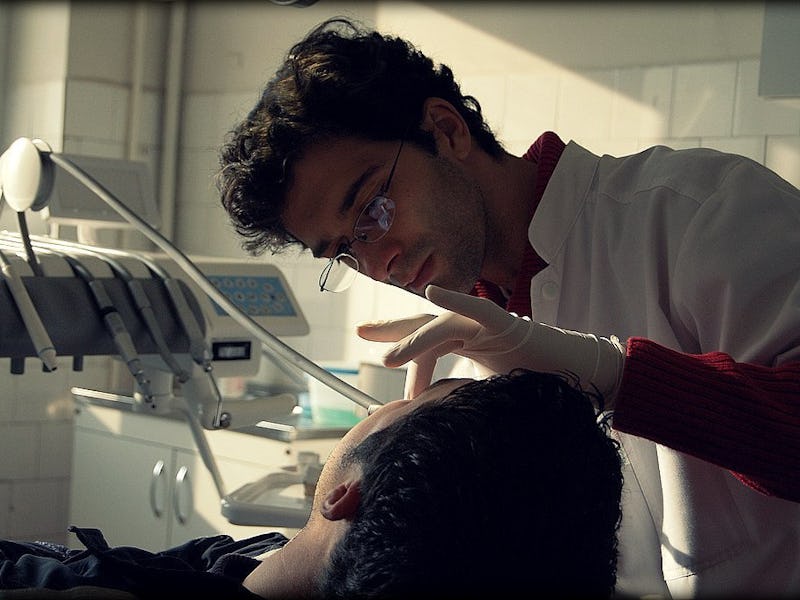Trips to the Dentist Don't Need to Suck Anymore
The next wave of tooth tech will take away the pain.

The dentist is the lone vigilante of healthcare, technically fighting for the forces of good but feared by one in four Brits, roughly half of the population of Appalachia, and pain receptors in gums across the globe. Thanks to an expanding dental tool belt, however, it might be time to reconsider your fear of the pearly white knight.
The future trip to the dentist is marked not by the mosquito whine of whirring tungsten carbide but by gentler plaque-busting tech this more civilized age deserves.
Plasma Jets
George Washington’s dentist, John Greenwood, thought he was on to something when he invented a foot-powered dental engine to operate drills. Using your feet for something other than getting gangrene blew minds in 1790, but it also paved the way for drills to dominate the dental industry. (The drill noise is often cited as a major buzzkill for would-be dental patients.) A better, more soothing alternative? A plasma jet. In 2010, German dental researchers harnessed the power of plasma — a state of matter consisting of charged particles, like lightning — to bust holes in bacteria in a laboratory. The plasma beam was relatively cool at about 100 degrees Fahrenheit. No one has quite figured out why the plasma is lethal to germs — the heat itself is not high enough to damage fingers, nearby tissue, or bacteria — but the scientists hypothesize that the plasma beam creates a sheath of charged oxygen gas molecules which punch their way through bacterial membranes.
Remineralization
Instead of cutting out decay and adding in artificial material, what if you could tap into the tooth’s own mineralization process? That was the thinking behind a device developed at King’s College London Dental Institute, which uses little electrical currents to force bits of mineral back to the tooth, plugging up minor cavities without a drill and turning your ivories into self-healing mini-Wolverines.
Sniffable Drugs
Because getting jabbed in the gums is as much fun as a rug burn, periodontists at the University at Buffalo in New York want to send anesthetics up through the nostrils. In a 2013 Phase 2 trial, patients given a nasal spritz of tetracaine did not experience adverse effects; the nose spray, the researchers wrote, offered “adequate and safe anesthesia for the majority of maxillary dental procedures.” It remains unclear if the nose spray would work for molar teeth, and though you won’t have to face your needle fear you might end up with a runny schnozz.
Air Cleaning
Air abrasion is a technique that blasts the enamel with aluminum oxide particles, which smack into the tooth at high speeds and removes bits of tissue and caries. It elicits so little pain dentists say they can do it without anesthesia.